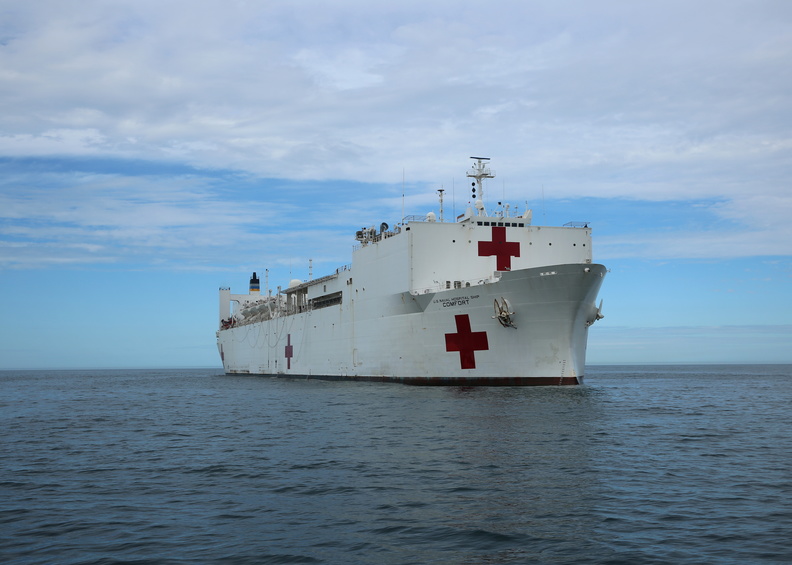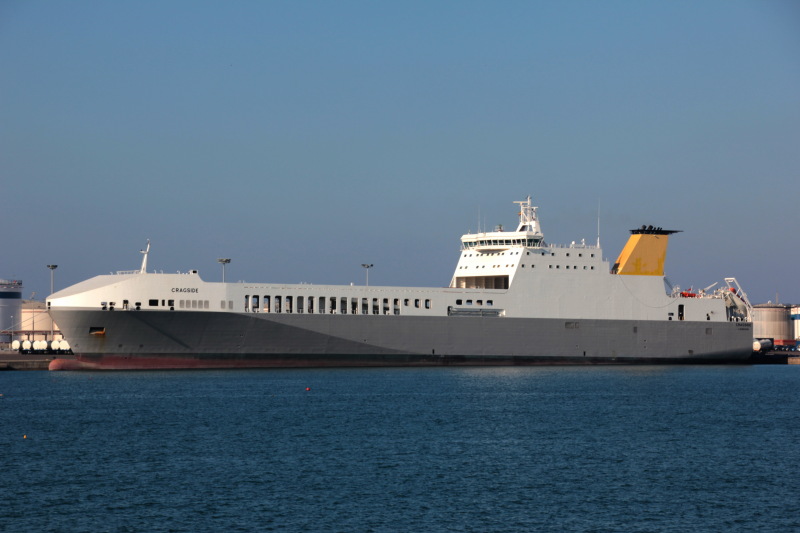
My hospital ship piece in Forbes.com last week has led to quite a bit of discussion on my suggestion that, at the $362 million price point, the NSMV would be a good hull for a dedicated medical vessel. For a piece that didn’t get a lot of eyeballs/clicks at Forbes, it certainly has sparked a big reaction offline.
My sense is that the NSMV hull-form is a solid basis for some handy auxiliary ship roles (i.e. the Common Hull Auxiliary Multi-Mission Platform (CHAMP) mission-set of command, hospital, tender, aviation support, etc.). I also think, that, on the part of Philly Shipyard–the NSMV builder–it is smart to move quickly and push ahead–whenever and wherever possible–with other ideas that would extend the production run. Getting a 4-ship hospital ship plus-up via some sort of election-year chicanery would make the NSMV hull the base CHAMP design by fait accompli–and that really should be Philly’s goal right now.
(And yeah, the process would be a little un-natural, but there is no shame in exploiting an Administration’s anxiety to get such a nationally beneficial project underway. We all know that, right now, procedural norms are decidedly un-trendy in this Administration! And who knows–maybe the Navy would learn a thing or two if it was forced to move super-fast on this kind of an acquisition. But, regardless of political affiliation, it is time we all realized that Great Power Competition won’t wait for leisurely contract ruminations by hordes of cubicle-bound and fractious NAVSEA GS-9s and various Warrant holders. We need to learn to move fast, and if norms need to be broken, so be it.)
Time is of the essence. If Philly Shipyard waits for the CHAMP competition to occur, quietly sitting in a corner, timorously staying off the playing field until the rest of the proposed NSMV buy is filled, then, well, not only will the production run effectively be at an end when CHAMP comes around, but the shipyard will have to compete with NASSCO, Bollinger and VT Halter on design and requirements, and then, probably, Philly will need to fight off every other “Lowest Price Technically Acceptable” mom-and-pop shipyard out there for the production run. If, as a second-tier shipbuilder, you don’t exploit your advantages when you have them, you’ll never win. It’s how caution kills the ‘ole profit margin–but heck, don’t listen to me, I’m just a blogger, right?
But, commentary aside, plotting out a single shipyard’s capture strategy isn’t the point of the post. This post is to re-emphasize that, at the $362 million price point, the NSMV is not the sole option out there. Let’s look at it.

What Are The Options?
Before we examine the second viable alternative to the NSMV, let’s take a second to look at what this proposed ship is NOT. What a $362 million price-point ship is NOT is a modified hospital-oriented EPF catamaran. Once the Navy starts looking at a $300 million dollar price-point and beyond, the Navy suddenly has a lot more room to look at options beyond a T-EPF. Above about a $250 million price-point, the T-EPF hospital ship concept runs into a competitive buzzsaw.
Now, the conventional wisdom out there is that Senator Richard Shelby and happy gang of hometown appropriators threw a big $1.4 billion dollar gift out for his home-state shipyard, the aluminum ship manufacturer Austal. I don’t think that is the case–the per-ship pricing is high enough to be little more than a poisoned chalice, where Austal has to say “thank you,” and then, in the procurement process, the company will get blitzed by the competition. Shelby can safely walk away from the wreckage, ruefully saying, “well, I tried my best.”
On this hospital ship project, Austal can only win if they game the requirements–which they can’t do very well–or, alternatively, they can try to win on price. But they can only win on price if they keep the proposed hospital ship price-point so low it keeps everybody else from bidding. With Shelby’s priced-out proposal out there, it may be too late, but…that’s the route to a win here. If the hospital-optimized T-EPF route is the goal, a savvy business person should be out there every darn day agitating for the Navy to keep buying base T-EPF models forever (and why not–they’re a bargain!) and then let the Service contract out any post-delivery modifications needed for the hospital/ambulance mission. That’s a far safer–and far more realistic–play than to try and make a dedicated medical T-EPF for $360 million apiece. And the longer Austal waits, the faster aluminum ship rivals like MetalShark will spin up to eat Austal’s lunch in the large aluminum craft sector (MetalShark is already building catamaran ferries, so Austal’s safe monopoly on big aluminum is rapidly dwindling away).
But, getting back to the $360 million price-point, the other interesting option besides the NSMV would be to modify a basic U.S- built Con-Ro or Ro-Ro. VT Halter, NASSCO and Philly Shipyard all have viable designs, and those platforms can easily be modified to support hospital ship duties or other projects. The pricing would work–$250 million would probably get a good domestically-produced base-model Con-Ro built and then $75 million in modifications would get the Navy a really neat and versatile platform. Heck, on such a platform, the hospital mission could simply be an ancillary one–if we employ the old MV Cragside modification model using a basic Flensburger ro-ro (photo is above) that I wrote about back in 2014–these ships could be out there doing a whole lot of other necessary stuff when the hospital mission is not needed.
Either way, both the the NSMV hull or the MV Cragside-like con-ro/ro-ro modification routes offer the Navy a handy, much-needed asset. Either will be enormously useful for afloat surface ship officer training (which is an enormous need right now) or any of the other auxiliary roles currently held by aged Navy vessels.
Embrace Senator Shelby’s gift for what it is, recognize what it is not, and get about urging the Administration to make it happen.
